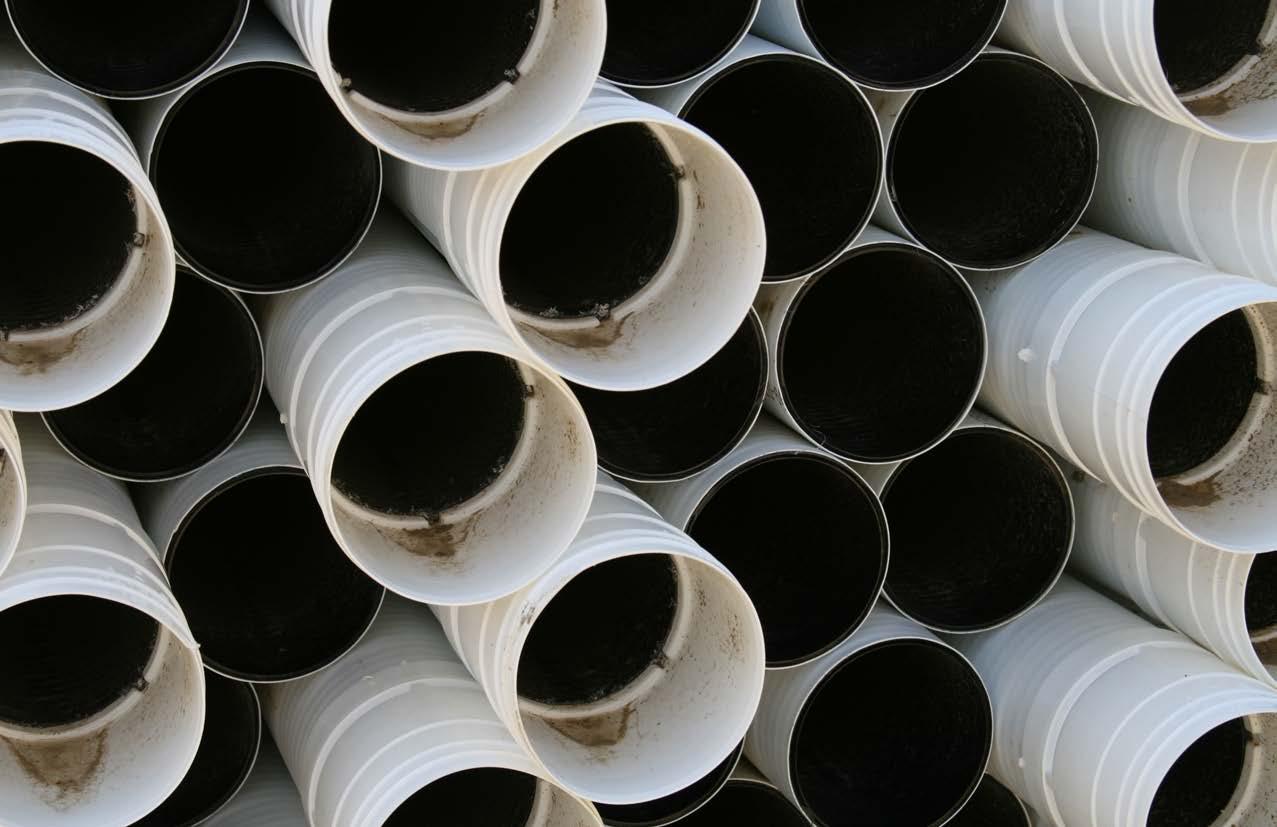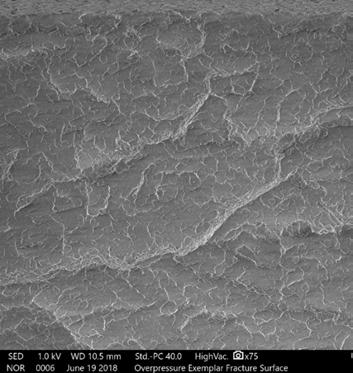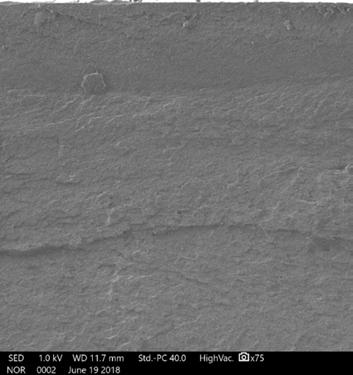
7 minute read
By By David Riegner, Ph.D. • S-E-A
Materials Overload:
The Impact and Advancement of a Timeless Study
David Riegner, Ph.D. S-E-A
The Stone Age, the Bronze Age, the Iron Age: the impact of materials science is so profound and transformative that we have named historical ages after advancements in materials. The “information age” could have been called the “silicon” or “semiconductor” age as the solid-state transistor depended on an understanding of new materials. The underlying premise of materials science is that materials act predictably, and that predictable behavior is informed by understanding the underlying atoms. Materials science connects the atomic scale to the human scale. Considering the theory of the atom wasn’t really nailed down until the early 20th century, materials science is, in some sense, “new.” The abundance of engineered materials in daily life makes it easy to forget that useful, predictable materials are intentionally designed and selected. History has demonstrated that advancements in materials provide an engineer with new capabilities and possibilities. Bronze and iron were breakthroughs when they were discovered and allowed early humans to craft complex tools and weapons. The construction of the first skyscrapers was made possible only by advances in steelmaking through the Bessemer Process.
MATERIALS ARE PART OF DESIGN
When thinking about design, one might envision plans, drawings, measurements and prototypes, but design drawings also specify materials. Materials selection is a central part of design, and, like all design, is an exercise in balancing trade-offs. A stronger material may be more expensive per ounce, but now less total material is needed to carry the expected load. A slightly lighter material may require thinner supports or fewer fasteners. Materials selection is a decision made with intent and consequence and therefore must consider reasonable use by an end user. When these decisions are made poorly and considerations for usage and environment are inaccurate, failures occur. A forensic expert specializing in materials can analyze and evaluate those decisions after the fact.
FORENSICS
A material cannot be fundamentally flawed. A chunk of steel in a dark, airless, empty void with no applied stress won’t “fail” because it isn’t doing anything. It is only through application that failure becomes a consideration. Failures occur when a material is placed into an application or environment that is incompatible with its capabilities. This isn’t to say that materials defects don’t exist. Materials can have cracks, inclusions, voids and other defects, but only through application do those defects lead to failure. Without a failure caused by improper application, a defective material never warrants an investigation. A famous example of this concept is the tragic explosion of the Space Shuttle Challenger in 1986. Shortly after liftoff, an O-ring on one of the solid rocket boosters failed and the escaping hot gas from the booster led to an explosion. But Challenger didn’t explode because the O-ring material was fundamentally bad. The materials selection process of the O-ring did not consider a launch from Florida taking place in below freezing temperatures. The O-ring failed because it was pushed into operation at a temperature that degraded its performance beyond what was anticipated by the designers. Physicist Richard Feynman famously submerged an O-ring in ice water and demonstrated that the ring lost its ability to seal below about 32oF. This is how materials expertise contributes to a forensic investigation: first, identify the material and then identify interactions that lead to a failure. The circumstances surrounding a failure are always critically important when investigating a failure and a forensic materials expert will know what questions to ask and what resources to consult to identify those circumstances.
FAILURE MODES
All cracks are not the same. When a material fails, telltale signs of the circumstances surrounding its failure are left behind on the fracture surface. The ways in which a material can fail are called “modes.” The most common, and easy to identify, failure mode is subjecting the material to too large a load. These failures are, predictably, called overload failures. Repeated loading of the part “back and forth” is another mode, called “fatigue.” The environment can contribute to a failure by causing corrosion or wear. Identifying the failure mode is a crucial step in an investigation as it often leads to identifying a cause of failure. A railing might fail due to being overloaded (mode), because too many people were leaning on it on an overcrowded balcony (cause). An example of the evidence left behind by different modes of failure is illustrated by Chlorinated Polyvinyl Chloride (CPVC),

FIGURE 1: Fracture surface of a CPVC pipe failed due to over pressurization. FIGURE 2: Fracture surface of a CPVC pipe failed due to freezing water expanding inside the pipe. FIGURE 3: Fracture surface of a CPVC pipe that has failed due to environmental stress cracking (ESC).


a plastic tubing material commonly used in fire sprinkler pipe. S-E-A regularly investigates these failures as they often lead to catastrophic water losses. To illustrate failure modes, S-E-A used brand new CPVC sprinkler pipe and intentionally induced failures by three common modes: overload, freezing of internal water, and environmental stress cracking (ESC). Using an electron microscope, the fractured surfaces were examined. Each mode leaves unique features on the fracture surface. The study of fracture surfaces, or “fractography” is just one part of a comprehensive materials failure analysis.
The images above illustrate the same CPVC material at the same magnification. This is a concise, if simplified, view of how materials experts can advance a forensic investigation. The difference in appearance is attributable to different modes, and different modes suggest a different cause. Interestingly, the load plays a role in all three failures, but the magnitude of the load isn’t the same!
The first image (Fig. 1) shows a pipe that was purely overloaded. The pipe was connected to a pump, sealed shut and had pressure increased until the pipe burst. Note the thin white features all over the fracture surface. These are thin, delicate peaks of material left behind as the material stretched and pulled apart like taffy, leaving behind tendrils at the point of rupture.
The second image (Fig. 2) shows a pipe that failed due to water freezing inside the pipe. When water freezes, it expands, and inside a sealed pipe this expansion can burst the pipe. As seen in Fig. 2, the fracture surface is relatively smooth and flat. Compared to Fig. 1, there are no tendrils of material on the surface. Like Challenger’s O-ring, the cold temperature reduced the material’s ability to stretch and made it more brittle. The lack of features on the fracture surface is indicative of a low-temperature failure in this material. The features left behind on the fracture surface distinguish a low-temperature overload failure (freeze) from a room-temperature overload.
The third image (Fig. 3) shows a fracture surface caused by environmental stress cracking. ESC occurs when polymer materials contaminated by a specific incompatible chemical are subjected to sufficient stress to cause the formation of microscopic cracks. The fracture surface in Fig. 3 looks nothing like Fig. 1 or Fig. 2 because the mode of failure is different. The pipe in Fig. 3 was exposed to Polyol Ester Oil (POE Oil) which is chemically incompatible with CPVC. The POE oil causes the pipe to burst at a relatively low load, much less than that required in Fig. 1 or Fig. 2. Often ESC failures are difficult to diagnose until the telltale “ruffled” fracture surface shown in Fig. 3 is observed.
Manufacturers of products have no control over the environment once a component or product is distributed. Manufacturers of CPVC and other commercially important materials publish “compatibility charts” that inform users which chemicals are known to be inert or aggressive to their product. Even with diligent obedience to the compatibility chart during a materials selection process, accidental cross-contamination from another system can occur and ESC can quickly destroy a piping system. Once ESC is identified as the mode, a more complex chemical analysis can identify traces of the contaminant left inside the pipe. ESC is a good reminder that hostile environments can induce failure in otherwise acceptable materials.
CONCLUSION
From a bronze-tipped spear to a booster rocket O-ring, smelted iron to synthesized nanoparticles, materials are changing as are the applications and forces they are subjected to. The way the material fails leaves behind objective evidence that reveals how and why a failure occurred. Materials science plays an important role in analyzing and diagnosing that failure. Quite often materials science is just one part of a multi-disciplinary investigation. Fires, construction defects, consumer product failures, vehicle accidents, HVAC systems and buried infrastructure can all potentially fall under the mantle of a materials-related investigation. Everything is made of something, and a materials investigation can help reveal what actually happened and why.
David Riegner, Ph.D. is a Materials Analyst at S-E-A. He earned his Bachelor of Science degree in materials engineering from Iowa State University. He completed his Master of Science and Doctor of Philosophy degrees at The Ohio State University, where he also served as a postdoctoral researcher and instructor.






